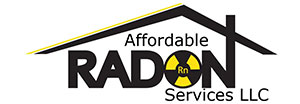Radon, an invisible and odorless gas, poses a significant health risk in many homes. The good news is that with proper ventilation techniques, you can reduce its levels and create a safer environment for you and your loved ones. Here’s what to know about how proper ventilation can help reduce radon.
Understanding Radon and Its Dangers
Radon is a naturally occurring radioactive gas found in rocks, water, and soil. It can seep into homes through cracks and gaps in the foundation and accumulate to dangerous levels. Prolonged exposure to high radon levels increases the risk of lung cancer, making mitigation necessary to protect the health of you and your family.
The Role of Ventilation in Radon Reduction
So how can proper ventilation help reduce radon levels indoors? Ventilation is the process of exchanging air in a space; fresh air enters and stale air exits. By introducing fresh air from outside and expelling stale indoor air, ventilation dilutes any trapped radon gas and reduces its levels.
Simple measures, such as opening windows and using fans, can significantly lower radon levels in your home. In addition to DIY methods, professionals, like us at Affordable Radon Services, can help. We provide expert radon mitigation in Colorado, employing advanced systems to make sure your home remains radon-free.
Types of Ventilation Systems for Radon Mitigation
Now, let’s discuss a couple of the advanced ventilation methods a professional can install in your home.
Active soil depressurization (ASD) systems, for one, use fans to draw radon-laden air from beneath the house and release it outside.
Other common ventilation systems are heat recovery ventilators (HRVs) and energy recovery ventilators (ERVs). These systems exchange stale indoor air with fresh outdoor air while also recovering heat or coolness from the outgoing air. This helps maintain a comfortable temperature inside while continuously diluting and removing radon gas.
Both systems are highly effective in maintaining low radon levels.
The Impact of HVAC Systems on Radon Levels
Can you also use your HVAC to lower radon levels? Yes—these systems can reduce radon levels in your home because they improve airflow and circulation.
Additionally, certain HVAC filters designed specifically for radon removal can further improve indoor air quality. It’s important to regularly maintain and balance your HVAC system so that it functions properly and effectively reduces radon levels in your home.
Now you can see how proper ventilation is key to reducing radon levels and enhancing indoor air quality. Understanding how to implement effective ventilation strategies can safeguard your home.
If you live in Colorado, Affordable Radon Services offers expert solutions to ensure your home stays radon-free. Our team of professionals uses the best industry products to give you quality radon removal services. Contact us today so we can help make your home a safer place to live.


Recent Comments